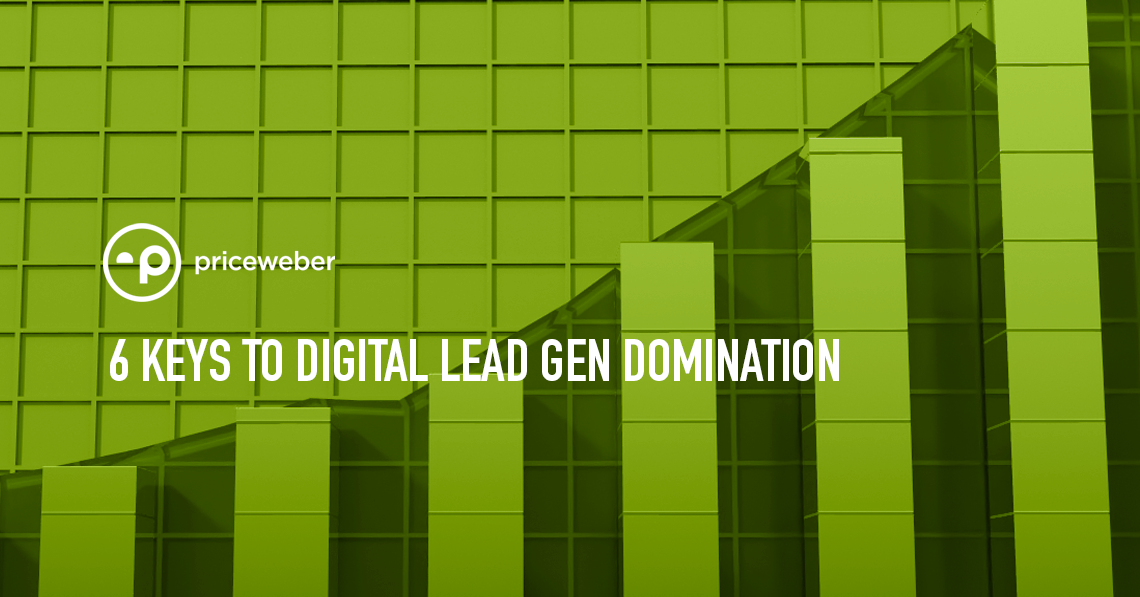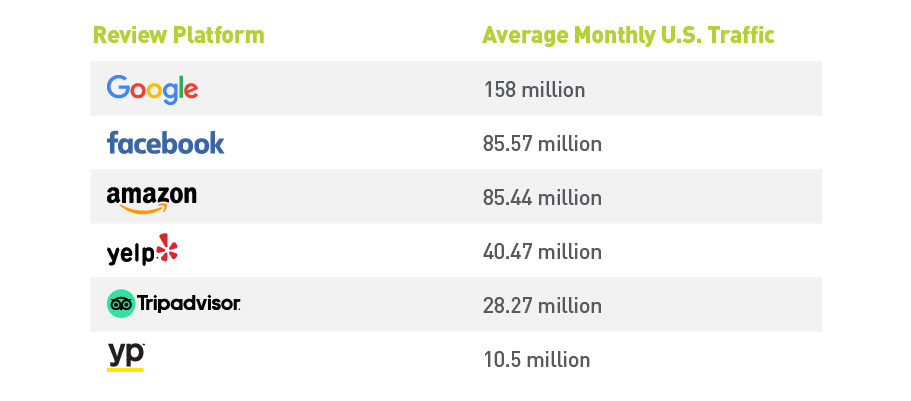Today we can’t think of any B2B or B2C business that doesn’t need more leads. With increasingly limited access to brick and mortar services, trade shows and shopping opportunities, those leads really need to be digital to keep your business healthy. Unfortunately, this is not a secret. Your competitors are likely upping their digital game as we speak. To compound the challenges, this year a number of things in digital marketing have changed as competitive activity has increased. There is, however, good news if you decide to implement a focused digital lead gen strategy:
- You will dramatically lower your cost per sale.
- Executing a digital lead gen strategy can be surprisingly affordable, with very low “start-up” costs.
- Insights you generate from digital lead generation can have a lasting and positive impact on all aspects of your business, from traditional marketing to product innovation.
There are the six digital areas you really need to be concentrating on in order to increase your digital authority and drive not just leads for your business but qualified leads that you can close and convert into profits. Each digital key feeds off the others to maximize results, so the best strategy is to implement each of these as a part of a comprehensive digital plan to acquire new customers and maximize your revenue potential. In today’s Plain Talk article, we’ll kick off our lead generation series and dig in to the six keys to building your ideal digital lead gen plan.
While each of these keys works in tandem with the others, we’ll break them up into sections on paid media tactics and non-media tactics.
Paid Media Options:
1. Paid Search
If you are seeking immediate results, there is no tactic more important in the world of digital marketing than paid search. It is the single most effective and cost-efficient digital channel to quickly acquire qualified leads and convert them to sales when done properly by experienced paid search experts. Why is it so important? Simply, you are catching customers at the top of SERP when they are actively working through “low funnel” activities that signal they are very close to making a buying decision.
- Paid advertising returns $2 for every $1 spent – a 200% ROI.
- 97% of consumers use the internet to search for local businesses.
- Search traffic generated 65% of total e-commerce sessions. Overall, 33% are generated through organic search traffic, and 32% are generated through paid search.
And you can’t talk paid search without talking about the big dog, Google Ads:
- Google has 95% of U.S. search engine market share.
- Sixty-five percent of people click on Google Ads when they are looking to buy, and most people still don’t actively recognize the difference between a paid ad and an organic search listing.
- The presence of ads on a Search Engine Results Page (SERP) reduces the first organic result click-thru-rate by 30%.
Other search engines like Yahoo, MSN or Bing can be useful supplements to a paid search plan depending on your customers and products, but the majority of market share and search volume flow through Google. This really means that Google is almost always the first and best place to start.
Paid search is your opportunity to quickly and cost-effectively convert a motivated buyer at the moment of purchase as they are actively looking for your product (or your competitor’s product). Plus it provides measurable sales results that you can track from spend to click to conversion to revenue and profits so you know the exact cost you are paying per customer acquisition. However, given that your brand can snatch a competitor’s hand-raiser, likewise your competitor can try to grab yours, paid search can also be an effective competitive “blunting” tool to protect your business from losing high-value online conversions. For details on building your paid search plan, check out our Media Director MK Reed’s article on the topic here.
2. Non-Search PPC
Pretty much all paid online media counts as some form of pay-per-click (PPC) advertising, including paid search. We broke paid search out in this article because it’s so critical to closing deals, as consumers are often very close to making a purchase decision. However, consumers don’t just buy online. They also research, vet and otherwise consider purchases. In fact, depending on how well your targeting strategy is set up, digital ads can also be effective in top-funnel functions like building awareness of products they hadn’t even considered. Given the important role non-search PPC can play in generating leads, we’re including several of the best here:
- Paid Social – Nearly 3 billion monthly active users were reported across Facebook’s family of products in Q1 of 2020 worldwide with over 250 million in the U.S. alone. Looking across all social networks, each user spends an average of 1 hour and 20 minutes on social platforms. That is a large audience to miss out on, so it is important to have a paid social plan to support your paid search strategy given that social media accounted for $37 billion is sales in 2019, according to eMarketer.
- Paid Display – Display ads can be great ways to generate name recognition and awareness for your brand while also driving people to your website. Highly targetable display ads appear on any of their 2 million websites (reaching 90% of internet users) and can trigger based on parameters set by you. Google Display Network (GDN) follows the same procedures as search ads, where you select keywords and/or custom infinity audiences to target. There are other networks outside of GDN, but GDN can be a great place to start and work with your traditional search campaigns.
- Paid Video – Video advertising is also a great way to get brand recognition and get users to take an active interest in your company and products. Sticking with Google products, YouTube has 167 million U.S. users and a similar targeting and setup process as your paid search efforts, but of course, there are other video platforms that can be used. Across all video, it’s estimated 85% of businesses use video as an effective marketing tool.
While there are plenty of other PPC campaigns that can be effective, including shopping ads on Google or other networks, these three items are critical tools that any brand should consider as a part of their media mix. Additionally, all of these types of PPC can be used to complement existing paid search efforts by using retargeting and custom audiences based on website traffic.
Non-media:
3. SEO – Organic Search Engine Optimization
The main focus of organic SEO is to improve your position in organic search listings on SERP. This is critical because many consumers hunting for a product will first interact with SERP, and some may never click through to go to your website. Increased utility of SERP on search platforms like Google means that consumers may be able to get a phone number or other required piece of info without that trip to your site. Certainly it’s SERP, NOT your brand’s website, that is going to be the context in which most people interact with your brand for the first time. We often see brands make the mistake of setting their website up well initially for organic search only to ignore it later. If you aren’t optimizing your SEO consistently, you are missing out on sales. Period.
The better your organic search strategy is, the more weight your website holds with search engines. If your site is built and content driven with the correct Google EAT parameters for your target market, you are going to reap the rewards for both organic search and paid search advertising.
4. Reputation Management
Online review quality and quantity will have a positive impact on your brand’s appearance on SERP and can directly impact your Google Ads effectiveness. Google will not even serve a Google Shopping ad if you have a star rating below 3.5, and the likelihood of appearing in a map pack will be significantly diminished. However, there is of course a more practical reason to manage your online reviews. People read them. A lot.
Your rating not only affects the efficiency of your ads and how they are served, it also has a direct impact on your customers because research shows that your star rating is the #1 factor used by consumers to judge a business and its products. In fact, positive display reviews can increase conversions by 270%. If not closely managed, the quantity and quality of the reviews that appear on SERP are going to affect your ability to attract and close leads.
Customers view company ratings and reviews across a multitude of social platforms and review sites in order to form a buying decision. So it is critically important that to have a strategy in place to collect reviews from your customers across multiple platforms, respond to all of your reviews and feedback in short order as well as have a strategy to promote and share your ratings and positive reviews so that you stand out from your competitors.
5. Content
Your site content is another critical aspect of SEO that does much more than improve your organic search results. While search engines look at your content for keywords and relevance to user queries, humans look at your content for everything from technical data to company values to useful tips in video and copy that can help them contextualize your product within the framework of their lives. That’s heavy lifting. So when considering content, the first question you must ask yourself is, “What is my content strategy?”
If your answer is something like, “My content strategy is to sell stuff,” consider working with your internal or external team on a deeper and more specific content strategy including:
- Objectives
- Audience segmentation
- Product segmentation
- Usage
All of these are important, but that last one, usage, is the one most often overlooked. This is important because you may have already decided not to create certain types of content, say for your website, because you think it is too expensive. Content types like video and animation can be extremely effective. However if you only use this content on your website, the return may be seen as too thin. When planning content, consider all of your marketing channels, including social media, email, traditional media, sales presentations and even public relations. You may find that the extra mileage on quality content makes it not only affordable but essential.
6. Email Marketing
It’s frighteningly easy for brands to forget how important and effective email marketing can be when it’s done right. According to one study, email marketing returns an average of $38 for every $1 spent. That’s a 3,800% return! Let that sink in and ask yourself if you can afford to ignore email marketing or allow it to underperform.
Not only does email marketing offer you an efficient and one-to-one touchpoint with prospective customers, it also offers excellent opportunities to remain top of mind and drive repeat sales. But the core of any solid email marketing campaign is the quality of the content that you are offering to prospective (or existing) customers. Content strategy and email segmentation will help you transform reasonable investment into high return sales activity.
We’ll be sharing a deeper dive into email in another Plain Talk article soon, but a few pointers for planning your email campaign include:
- Start with a “clean” email list or prospects. Bought lists from low-quality or unknown sources will almost always blow up in your face. To make sure your list grows with quality leads, make sure your website offers a sign-up that’s easy to find. There are no better leads than hand-raisers who sign up for your emails.
- Make sure to skip the hard-sell, spammy emails. They are a turnoff for most consumers today who have been trained to expect more nuance and value in a well-done email.
- You would be shocked at how many emails go out daily that are loaded with spelling, punctuation or grammar errors. This is just never acceptable and, in some cases, like with professional services such as lawyers or accountants, can even be seriously detrimental to your credibility.
- Then once your email is laid out, always do a test send to make sure everything in your email populates well and looks good.
- Make sure your customer experience is consistent. If your email is driving a prospect to see more or read more on a web landing page, make sure that page looks and feels consistent and that the experience on the landing page meets the reader’s expectations.
- And finally, listen to customer feedback. Make sure you are set up to track all activity generated by email and are analyzing it closely for opportunities to optimize content, landing pages, deployment timing and personalization.
Ready To Close More Business?
If your lead generation plan isn’t performing on any or all of the above, now is the time to make the necessary changes. Unlike traditional media and other aspects of the marketing mix, this digital approach has the added benefit of flexibility that means you can add, subtract or tweak on the fly.
We hope you’ll continue to join us for ongoing installments on lead gen in our Plain Talk series. If you have any questions or need help with turbocharging your lead generation efforts, give us a call at 502-499-4209 or contact us here.
Not sure yet? Let us provide you with a free, custom audit of your lead gen marketing efforts. We’ll provide a full analysis of your SEO, digital media, review management and social media as well as a plan that will maximize your profits.
Want to see some proof of how we drive profits for our clients through lead gen marketing? Check out our Lead Generation page on our website.



